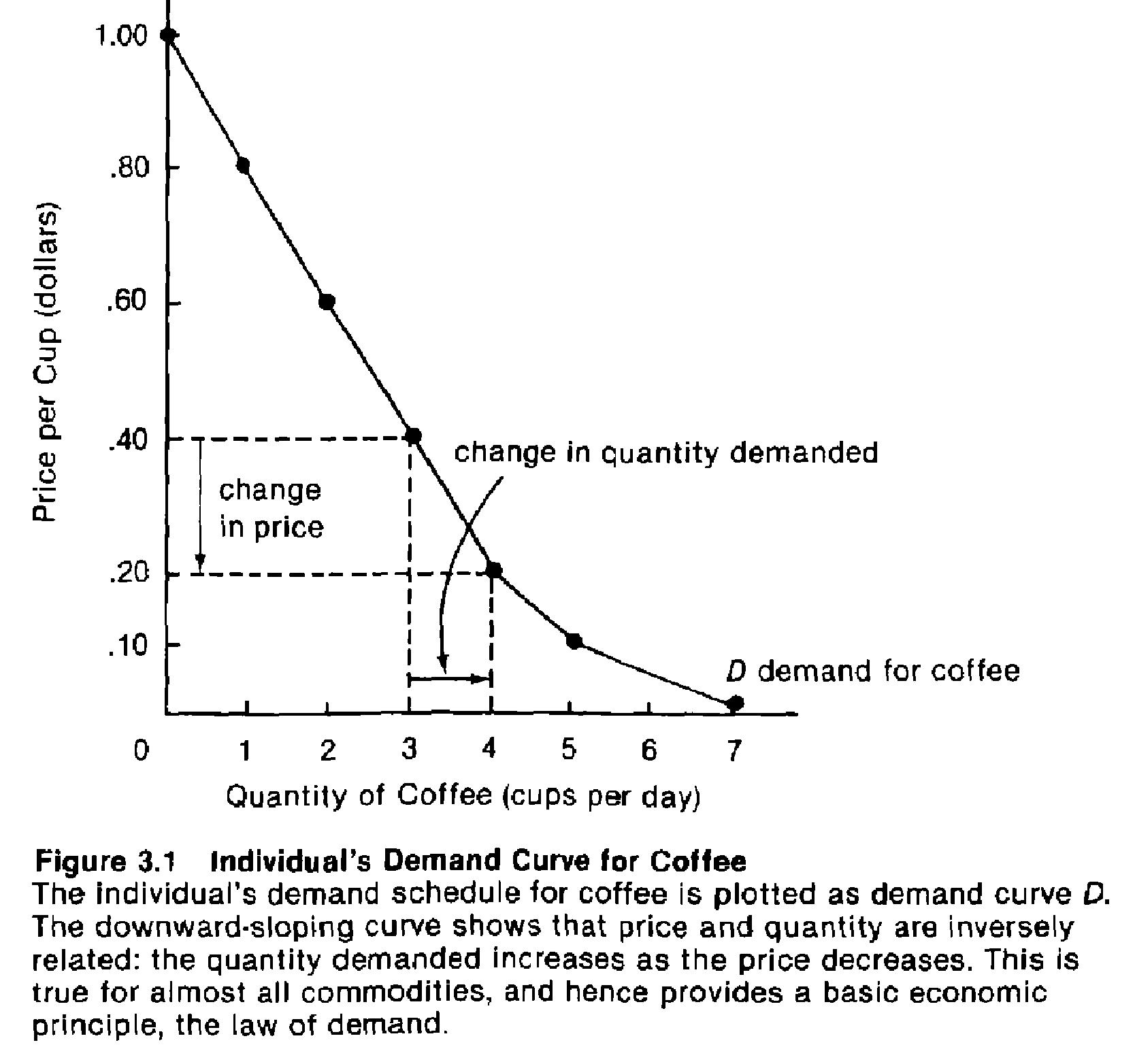Change in Quantity Demanded versus Shift in Demand
Demand has been defined as a schedule of the quantities of a commodity that would be purchased at various prices, when other factors are held constant. The quantity that will be bought at a specific price is referred to as the quantity demanded. It is difficult to talk about, for example, the "demand for coffee" because this involves a description of the entire demand schedule or curve. Rather, when people talk about the "demand" for a commodity, they are usually referring instead to the quantity demanded, or purchased, at the prevailing price. When this price increases, people may also tend to say that the "demand has fallen", when in fact they are referring to a change in the quantity demanded. By referring to Figure 3.1 below, you can see that the change in quantity demanded as the price of a cup of coffee drops from $.40 to $.20 is the increase from three to four cups. If all other factors are unchanged, a change in price must result in a change in the quantity demanded or purchased.

The law of demand included the words "all other things being equal" (ceterus paribus). There are many factors that determine a person's demand for a commodity, or that explain, for example, why the coffee drinker would buy four cups at a price of $.20 per cup instead of either three or five cups. These factors fall into the four major groups below:
- The price of related commodities – substitutes and complements
- The consumer’s income level
- The consumer’s taste or preference for the commodity relative to other commodities
- The number of consumers in the market
When one of the above factors change, the entire demand curve changes as shown in figure 3.2 below:

Source: Stager, D., Economic Analysis and Canadian Policy, 7th ed., Toronto: Butterworths, 1992.